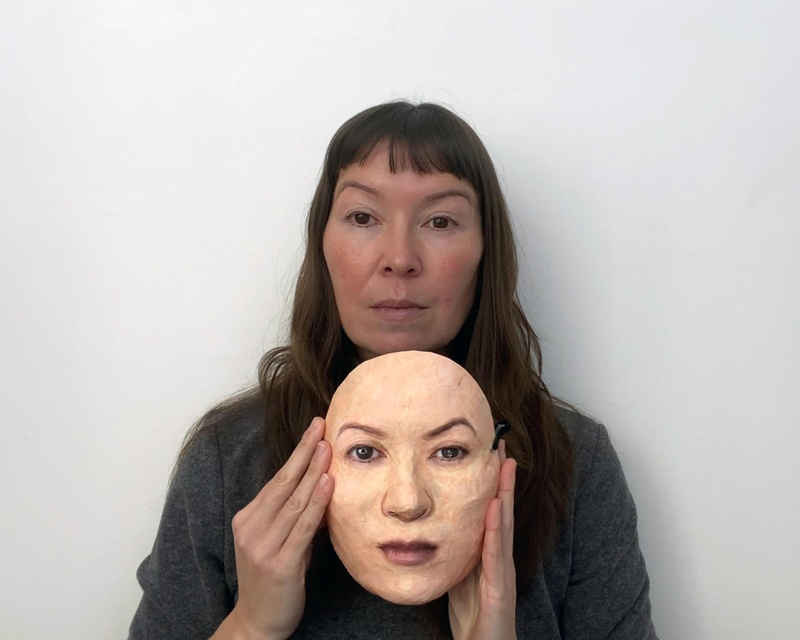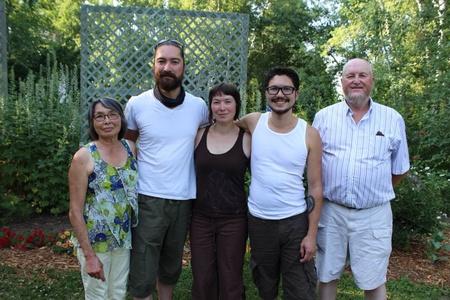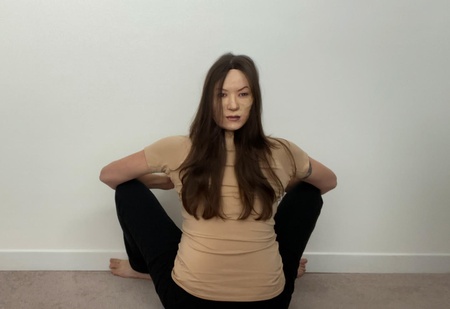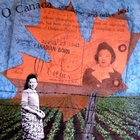“The artist is meant to put the objects of this world together in such a way that through them you will experience that light, that radiance which is the light of our consciousness and which all things both hide and, when properly looked upon, reveal.”
—Teacher, translator and author, from The Hero With A Thousand Faces, Joseph Campbell (1904-1987)
By now, we all understand what it is to be the face behind the mask, don’t we?
Reflecting on this and on doing some research about masks, one other quote really stood out for me. It is from Quebec writer and academic, Andre Berthiaume (1938 - ) who wrote: “We all wear masks, and the time comes when we cannot remove them without removing some of our own skin.”
We seem to be at a point where we all need to reassess ourselves, our public mien/tatemae, in respect to reflecting on what parts of our pre-Covid-19 selves we are leaving behind in the process of moving beyond Covid and how we want to reinvent ourselves in the New Age? How, in fact, do we carve/create new masks? Like a puzzle, does the removal of a piece mean that some others will collapse? Will the integrity of the whole will be compromised? Or is that “missing” part the point?
Through emails with Miya Turnbull, I mention my own personal interest in masks and my small collection that I treasure, collected over years of travel. My first one was a First Nations mask called “The Seeker” that I got at a gallery in Horseshoe Bay, BC. It’s been watching over me for a few decades.
December 1999. I have fond remembrances of Bali, Indonesia: a dream-like place of serpent-like masks and carvings, shocking faces carved into rock, mouths agape at the entrances to caves seemingly leading to the underworld, were the scariest: wild tangled hair and rapt expressions. From Narita, flying into Bali, through a spectacular flame bursting sunset, rumbling into a small dirt road village in a noisy tuk-tuk taxi, finally, after a long ordeal at the airport and 30,000 yen “lighter” (a very long story), dumping my backpack in my room, walking over to the remains of an ancient stone Muslim temple where a shadow puppet dance drama was unfolding, playing out on a cloth screen, back lit by the flickering glow from fire burning lanterns, framed by stone pillars. We were transfixed, hushed.
Living in Japan, I learned about the otherworldly, rotund alien-like images of the Tohoku, clay Hani dolls, the blazing red tengu swordsmen (my aikido teacher swore he fought one of these mythical creatures in Yamadera), the dynamic stillness of Kazuo Ohno (1906-2010) sensei in makeup for one of his stunning Butoh dances, those wild Kabuki visages and the quizzical white face Noh masks that still spook me. Recently, looking through decades of photographs, I can relate to all of them.
Our discussion through an exchange of emails about mythologist Joseph Campbell and Dr. Takeo Doi’s (1920-2009) groundbreaking books (Anatomy of Dependence, The Anatomy of Self) about Japanese identity fresh in mind, it was a special treat to talk with Halifax, Nova Scotia mask maker Yonsei Miya Turnbull.
* * * * *
First of all, can we go back to the beginning and talk about where you grew up? It was on a farm/ranch, wasn’t it?
I grew up on a farm near the small town of Onoway, Alberta—just outside of Edmonton, on Treaty 6 territory. My dad had cattle and grew hay, wheat, canola, barley, and oats. I am very fortunate to have had the experience growing up as a farm kid with my 2 brothers. I’ve spent many hours outside, picking rocks and roots from the fields, driving tractors; plowing fields, haying, and piling lots and lots of manure.
Can you talk a bit about your family and earliest remembrances of learning about your Japanese Canadian heritage?
We would often visit my Grandparents and family in Lethbridge and this is where we were mostly exposed to our Japanese culture. As soon as we would arrive, there would be homemade udon, futo-maki, sashimi, homemade tofu and tsukemono. I didn’t realize how special this was until much later—food is definitely a connecting factor for me to my heritage. My grandmother Kimiko was the most amazing cook!

My mom’s first language was Japanese, which was lost when she started school, so we didn’t speak it at home. When we were all little, she would drive us kids to Edmonton for a weekly Japanese lesson until we complained too much and we stopped, much to my regret now. At home there were always words interspersed with English, mostly involving foods like “Shoyu”, and my favourite was when my mom yelled “Yakamashi!” when we were too noisy.
Family reunions on our Hisaoka side are amazing. All the families stemming from my great-grandparents who came in Canada in the early 1900’s get together every 3 years. A lot of my cousins are half-Japanese like me, so it’s wonderful to be around everyone and we celebrate our Japanese Canadian culture in many ways together. This is so important to all of us, especially as each generation tends to get more mixed.
One memory I have growing up: my mom was involved in Japanese dance with an Edmonton group and would wear the most beautiful kimonos. At one point, I joined in when I was maybe 7 years old and I remember we were all getting ready for a performance for the Multicultural Festival. Some in the Japanese Community were asking who the blonde girl was. It took me a while to realize they were talking about me! I’m definitely not blonde but to them, I didn’t look Japanese. Ironically, I always wanted to be blonde because that’s what I thought “beautiful” was supposed to be.
How do you continue to process the experience of racism and interment that Japanese Canadians suffered through during WW2?
I think about what my grandparents went through a lot—I still find it hard to comprehend how they endured so much. My mom was really instrumental in getting her parents and aunts and uncles to start talking about their experiences. She compiled a book of our family history, which is amazing. I’ve read their stories but each time I come back to them, I learn and understand more. Now, she’s asking the older Sansei cousins for a child’s viewpoint of life on the sugar beet farms. It’s so important these stories are talked about, heard, and recorded because we can’t ever forget that this happened.
At about what age do you remember doing art?
I was always drawing when I was a kid and my dad made a big wall for us that we could draw on. I didn’t really get into art until high school. I had the coolest teacher—Ms. Linda Lawrence—who really encouraged me and this is where I made my first mask out of clay.
What kind of influence was your mom?
My mom nurtured our creativity with all sorts of arts and crafts. Even in the kitchen, she would make bread and then let us braid rolls or make buns in different shapes. When my little brother started getting older, she started making pottery. She had her own studio in our basement and our living room became the gallery/show room. I remember helping her out at craft fairs which was so much work for so little reward, but despite that, I find myself doing the same thing with my textile work at the local farmer’s market with my daughter.
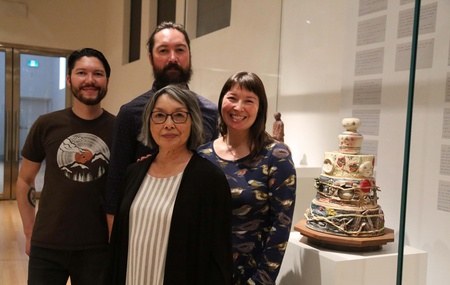
How did your Dad factor into this equation?
My dad was also very supportive of our artistic sides. He always says he has no artistic talent but I saw him as a “Maker.” He was a fixer and a builder. On the farm, when some machinery broke down, he had to use his skills to fix things all the time and figure out creative ways to get going again. He built us so many cool things—a treehouse, see saw, swing, play house, skating rink, etc. He was so nurturing and always insisted that I could be anything I wanted to. He was very supportive of my mom pursuing her craft as well and built her her own studio/gallery next to his workshop which is now his wood shop. I have some beautiful bowls and Kokeshi dolls that he has turned out of wood.
What was it like growing up in Onoway?
I found growing up in Onoway a bit challenging. I loved the farm and still do, but I had a hard time with the small town mentality. Even though Edmonton was only an hour’s drive away, I never enjoyed that city very much either. The town itself is so small—had maybe 1000 people and all of them were Caucasian so there wasn’t a lot of diversity. There were First Nations kids around when I was in Elementary school but they were tormented relentlessly at school by the white kids and eventually left to go to the school on the reserve. I was never involved directly in that but I didn’t stand up for them at the time and I regret that very much to this day.
I remember kids taunting me with the rhyme “Chinese, Japanese, dirty knees, look at these” in Grade 5 and I couldn’t get them to stop until the teacher intervened. They probably didn’t even know what any of it meant. I remember my teacher sitting all us of down and saying, “You know—Miya is different...” and I thought, ”No, I’m not!” and felt like crying.
I hated the overall everyday experience of high school. I was depressed and didn’t have strong connections with many people. I loved the school work aspect and I am so grateful for art classes because I genuinely believe that saved my life. I left town as soon as I graduated, literally the morning after our Graduation party, after some people trashed the hall we were at. I went to BC for a while then to Edmonton, before deciding I wanted to go to University. I decided on Lethbridge where I felt a connection before, visiting my grandparents and the Japanese Canadian community. University life was amazing! This is where I met all my best friends, got to try so many different classes and further developed my art skills.
I love going back home to visit, but only to see my family and the farmland—both my brothers ended up back there after living in Edmonton and they both have kids so it’s so fun to visit when we can. I love living in Halifax by the ocean, so I’m not sure I can leave even though it’s so far away from my family.
Your mom had a pottery studio, didn’t she? Is this where you played around with the idea of being an artist?
Yes, I loved watching her work on the wheel and seeing all her beautiful pottery, but she basically scooted us out of her studio when we wanted to play with clay (which inevitably meant, making a mess). I didn’t spend much time in there myself. It wasn’t until I started University, where I found my voice as an artist in my own way through mask making in particular.
How did she encourage you to be an artist?
Both my parents were extremely encouraging. They saw I had talent in many different areas and were really supportive of me finding my path. At University, I went from a Biology and Art combined degree to Psychology and Art degree then I decided to focus in on a Bachelor of Fine Art. Coming from a family of makers though, really influenced me the most. Seeing them both self-employed and making and fixing things had the most impact on me, for sure. I am so grateful that they both get to see how successful my art career has become lately!
How did you gravitate towards mask making as a form of personal expression? How might it be unique and different from other forms of art?
While I was doing my BFA at University, I explored sculpture, photography, printmaking and painting. I had to get special permission to take a mask making class because it was part of the Drama department. There I learned how to make the plaster cast of my face and make papier-mâché masks which is still the basis of my masks today. Within an Open Studio, I was free to experiment and I began combining photocopies of my face with my masks and this marked the beginning of my PhotoMask technique. I was blown away by how realistic and creepy and cool they were. I worked with masks and video projections (digital masks) for a while until I graduated, then didn’t know where to go from there.
It wasn’t until later in Montreal at Concordia University, where I was auditing an Introduction to Art Therapy Class, that my masks began to take on more meaning. One project we were assigned was to represent the Self, as defined by Carl Jung, with any medium we wanted. I chose to make a mask, which seemed to be the perfect symbol for this. I used an image of my friend on the front of the mask and for the first time, put a face with closed eyes on the concave space of the mask to represent both our ego (on the outside) and unconsciousness (on the inside). I later went on to develop this work solely as self-portraits to explore identity.
So much history already comes with Masks as an art medium—they are used in theatre, in ceremonies and rituals, at Halloween, and especially now in our daily life during a Pandemic. They are used for disguise, masquerade, transformation, and for protection, among other reasons. By using masks as a medium, I can draw from all of that symbolism and use the mask to represent archetypes or different personas and add my own meanings to the masks as well which I find really exciting and interesting.

You put on and wear a mask from Halloween to ballroom masked dances. As a viewing audience, how should we experience a mask?
Most of the masks I was making up until a few years ago were ornamental. I would photograph and display them as a sculptural objects. Once I started putting them on, something extraordinary happened and there was a transformation where I became something “other.” I would capture the results through video and photography. I have a lot to say with each individual mask but adding in the relationship between my body and the masks, I’ve discovered is just as important too. If people can perceive me with this “false face” as my own, I can show different facets of my identity. When a mask is put on the back of my head, I can create a distorted “creature.” I do like playing with that uncomfortable tension that can arise from seeing a face with extreme distortions or body with “unnatural” positioning.
© 2021 Norm Ibuki


